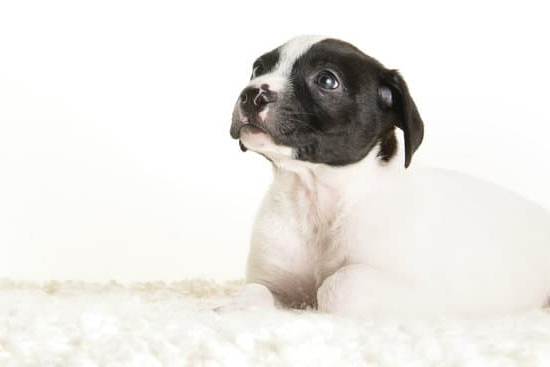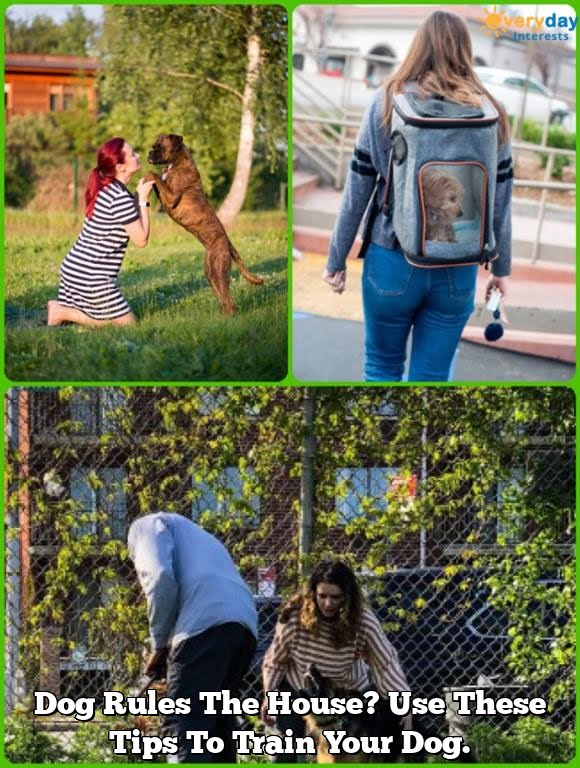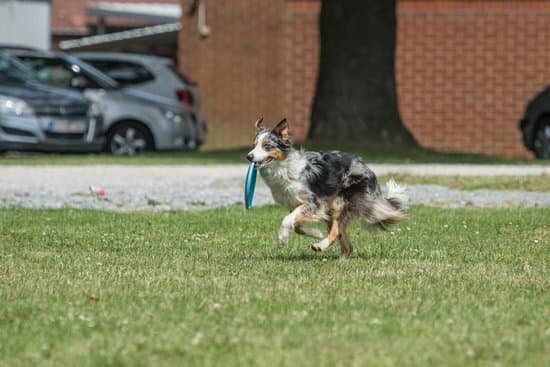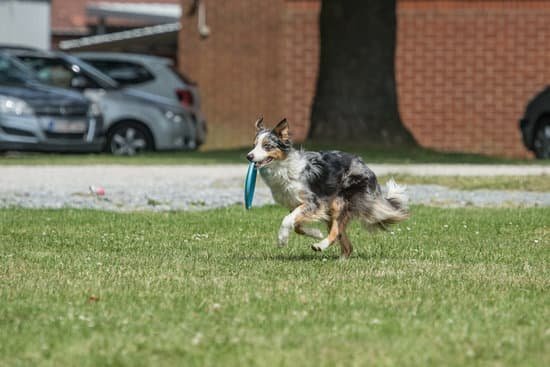Are you wondering how to train Aspin dog? Aspins, also known as Philippine native dogs, are smart and lovable pets, but they require proper training to ensure they are well-behaved and happy. In this article, we will delve into the various aspects of training Aspin dogs, from basic obedience to advanced techniques and specific behavior issues. Understanding the Aspin Dog Breed is the first step in effectively training these wonderful companions.
Aspins are a mixed breed that can vary greatly in appearance and size, but they are known for their intelligence, loyalty, and adaptability. Before diving into training techniques, it is essential to understand the unique characteristics of the Aspin breed. This understanding will allow for more effective training methods tailored to their specific needs and temperament. Whether you have a new puppy or an adult dog, this article will provide valuable insights into successful training strategies for Aspin dogs.
Basic Training Techniques for Aspin Dogs are an important foundation for building a strong bond with your pet and ensuring their safety and well-being. From potty training to teaching basic commands such as sit, stay, and come, establishing clear communication with your Aspin is key. Additionally, positive reinforcement methods that focus on rewarding good behavior rather than punishing bad behavior can greatly enhance the training process. Stay tuned as we explore these essential techniques in depth throughout this article.
Basic Training Techniques for Aspin Dogs
The Aspin dog breed is known for its intelligence and high energy levels, making them a great candidate for training. Whether you have adopted a Aspin puppy or adult dog, it’s important to start with basic training techniques to establish good behavior and obedience. Here are some fundamental training methods for Aspins:
Start With Basic Commands
Before diving into more advanced training, it’s crucial to teach your Aspin basic commands such as sit, stay, come, and heel. Use positive reinforcement and rewards like treats or praise when they follow the command correctly. Be patient and consistent with your training sessions to help your Aspin understand and retain these commands.
Leash Training
Aspins are active dogs that require regular exercise, so leash training is essential. Begin by introducing your Aspin to the leash and collar in a positive manner, allowing them to get comfortable with wearing it before going on walks. Practice walking on a loose leash and discourage pulling by stopping when they do so. Gradually increase the duration of walks as your Aspin becomes more accustomed to walking on a leash.
Crate Training
Crate training can be beneficial for Aspins as it provides them with a safe space and helps in housebreaking. Introduce the crate as a positive environment by placing toys or treats inside and allowing your Aspin to explore it at their own pace. Use positive reinforcement when they enter the crate willingly and avoid using it as punishment. Gradually increase the time they spend in the crate while you’re at home before leaving them alone for short periods.
By implementing these basic training techniques, you can set a solid foundation for further training with your Aspin dog. Consistency, patience, and positive reinforcement are key when learning how to train an Aspin dog effectively.
Positive Reinforcement Methods for Aspin Dogs
Aspin dogs, also known as “asong Pinoy” or Philippine native dogs, are a versatile and intelligent breed that responds well to positive reinforcement training methods. Positive reinforcement involves rewarding your dog for good behavior rather than punishing them for bad behavior. This creates a positive association with the desired behavior and encourages your dog to continue behaving in that way. Here are some effective positive reinforcement methods for training your Aspin dog.
First and foremost, one of the most important aspects of positive reinforcement training is to use plenty of treats, praise, and affection to reward your Aspin for good behavior. Whenever your dog follows a command or exhibits the desired behavior, immediately give them a treat and shower them with praise. This will help reinforce the idea that obeying commands leads to positive outcomes.
Another effective positive reinforcement method is using clicker training. With this method, you use a clicker tool to make a distinct clicking sound whenever your dog behaves appropriately. This signals to your dog that they have done something right and will receive a treat as a reward. The clicker serves as an immediate marker for the correct behavior.
In addition to food rewards and clicker training, you can also incorporate playtime and toys as forms of positive reinforcement for your Aspin dog. Playing with toys or engaging in fun activities with your dog as a reward for their good behavior can be extremely effective in reinforcing their training.
| Positive Reinforcement Method | Description |
|---|---|
| Treats, praise, and affection | Rewarding your Aspin with treats, praise, and affection for good behavior. |
| Clicker Training | Using a clicker tool to mark the correct behavior and provide immediate reward. |
| Playtime and Toys | Using playtime and toys as forms of reward for good behavior. |
Socialization Tips for Aspin Puppies
When it comes to socializing Aspin puppies, it’s important to start early and expose them to a variety of different people, animals, and environments. Here are some tips for effectively socializing your Aspin puppy:
1. Introduce them to new people: Take your puppy to different places where they can meet and interact with new people. This can include taking them for walks in the park, visiting friends and family, or even bringing them to outdoor events.
2. Expose them to other animals: It’s crucial for your Aspin puppy to have positive interactions with other animals. Consider setting up playdates with other friendly dogs or introducing them to cats and other pets in a controlled environment.
3. Familiarize them with different environments: Aspins are adaptable dogs, but it’s still important to expose them to various environments from an early age. Take them on car rides, introduce them to different surfaces like grass, pavement, and sand, and let them experience different sounds and smells.
Remember that socialization is an ongoing process that should continue throughout their lives. Positive experiences during their formative months will help shape their behavior as adults. Taking the time to properly socialize your Aspin puppy will result in a well-rounded and confident dog that is comfortable in a variety of situations and around different types of people and animals.
For more tips on how to train Aspin dogs effectively including socialization techniques, consult with a professional dog trainer who has experience working with mixed-breed dogs like Aspins.
Advanced Training for Adult Aspin Dogs
Aspin dogs, like any other breed, can benefit greatly from advanced training techniques once they have mastered the basics. Advanced training for adult Aspin dogs can help to further enhance their obedience, focus, and overall behavior. It is important to keep in mind that every dog is different, so it may take some time to find the best approach for your specific Aspin.
Continued Obedience Training
Continuing to work on obedience training with your adult Aspin dog is crucial for reinforcing good behavior and maintaining their skills. This can include practicing commands such as sit, stay, heel, and come in various environments and with distractions present. Consistent practice will help keep these commands fresh in your dog’s mind.
Advanced Commands and Tricks
Once your adult Aspin has a solid foundation of basic obedience commands, you can start introducing more advanced commands and tricks. These could include things like speaking on command, putting objects away, or even learning specific phrases or signals. Teaching these kinds of tricks not only stimulates your dog mentally but also deepens the bond between you and your furry companion.
Finding Their Special Talents
Every dog has their own unique talents and abilities. Some Aspins may excel at agility, while others may show a remarkable aptitude for scent work or fetching. By observing your dog’s natural inclinations and preferences, you can tailor their advanced training to develop these skills further. Whether it’s through formal training classes or simply setting up activities at home, recognizing and nurturing your Aspin’s special talents can be incredibly rewarding for both of you.
By consistently applying positive reinforcement methods and dedicating time to understanding how to train an Aspin dog effectively at an advanced level, you can help them reach their full potential as a well-behaved, confident, and skilled canine companion.
Addressing Specific Behavior Issues in Aspin Dogs
Aspin dogs, also known as Asong Pinoy, are a mixed breed of dog that is commonly found in the Philippines. These dogs are often street dogs or strays that have been taken in as pets. Aspins are known for their loyalty, intelligence, and adaptability, making them great companions for families. However, like any other breed, Aspin dogs may exhibit specific behavior issues that need to be addressed through proper training and guidance.
One common behavior issue in Aspin dogs is separation anxiety. This can manifest through excessive barking, destructive chewing, or even attempts to escape the home when left alone. To address this issue, it’s important to gradually accustom the dog to being alone by practicing short absences and providing comfort items such as toys or blankets. Positive reinforcement techniques can also be used to create a positive association with being alone.
Another behavior issue that Aspin dog owners may encounter is leash pulling during walks. This can make walks unpleasant for both the dog and the owner. To train an Aspin dog to walk politely on a leash, using positive reinforcement methods such as treats and praise for walking without pulling can be effective. Additionally, using a front-clip harness can help discourage pulling by redirecting the dog’s attention back towards the owner.
Aggression towards other animals or people is another behavior issue that some Aspin dogs may display. It’s important to address aggression early on by seeking professional help if needed and employing positive training methods to teach the dog appropriate behaviors and responses. Socialization with other animals and people in controlled environments can also help reduce aggressive tendencies in Aspins.
Overall, addressing specific behavior issues in Aspin dogs requires patience, consistency, and understanding of their unique traits as a mixed breed. By employing positive reinforcement methods and seeking professional help when needed, owners can effectively train their Aspins to be well-behaved and social members of the family.
| Behavior Issue | Training Technique |
|---|---|
| Separation Anxiety | Gradual acclimation to being alone & positive reinforcement |
| Leash Pulling | Positive reinforcement & front-clip harness |
| Aggression | Socialization & positive training methods |
Exercise and Mental Stimulation for Aspin Dogs
Aspin dogs are known to be energetic and active, so it’s essential to provide them with enough exercise and mental stimulation to keep them happy and healthy. Here are some tips on how to ensure your Aspin gets the physical activity and mental enrichment they need:
1. Regular Exercise: Aspins require regular exercise to maintain their overall well-being. Daily walks, interactive play sessions, and off-leash runs in a secure area can help burn off their excess energy. Consider engaging in activities such as hiking, running, or swimming with your Aspin to keep them physically fit.
2. Mental Stimulation: In addition to physical exercise, it’s crucial to provide mental stimulation for your Aspin. Interactive toys, puzzle feeders, and training exercises can keep their minds engaged and prevent boredom. Teaching them new tricks or commands is also a great way to challenge their intelligence.
3. Obedience Training: Incorporating obedience training into your Aspin’s daily routine can also serve as mental stimulation. Teaching them basic commands such as sit, stay, and come not only keeps their minds active but also helps in managing their behavior.
It’s important to remember that every dog is unique, so it’s essential to tailor their exercise and mental stimulation regimen based on their individual needs and abilities. By providing adequate physical activity and mental enrichment, you can help ensure that your Aspin remains happy and well-adjusted.
Obedience Training for Aspin Dogs
The key to training an Aspin dog for obedience lies in understanding the breed’s characteristics and using positive reinforcement techniques. Aspins are known for their intelligence and loyalty, making them eager to please their owners. However, they can also be independent and strong-willed, requiring patience and consistency in training.
To start obedience training for your Aspin, it is important to establish yourself as the leader through calm assertiveness and clear communication. This means setting boundaries and rules from the beginning, such as crate training, potty training, and basic commands like “sit,” “stay,” and “come.” Consistency is crucial in reinforcing these rules, as Aspins respond well to routine and structure.
Positive reinforcement methods such as treats, praise, and play are effective in encouraging good behavior in Aspin dogs. Rewarding them for following commands or exhibiting desired behavior will reinforce their understanding of what is expected of them. Additionally, incorporating mental stimulation through interactive toys and puzzles can help keep their minds engaged and prevent boredom, which could lead to destructive behaviors.
When addressing specific behavior issues in Aspin dogs during obedience training, it is important to identify the root cause of the problem. Whether it’s excessive barking, jumping on people, or pulling on the leash, addressing these issues with patience and positive reinforcement will result in better obedience from your Aspin.
It’s important to stay consistent with your training methods while being mindful of the individual personality traits of your dog. With time and dedication, your Aspin will become a well-behaved and obedient companion through effective obedience training techniques tailored to their needs.
Training Aspin Dogs for Specific Tasks or Activities
Aspins are versatile and intelligent dogs, making them suitable for specific tasks and activities. Whether it’s therapy work, search and rescue, or even just participating in dog sports, training an Aspin for specific tasks or activities requires patience, consistency, and positive reinforcement.
When training an Aspin for specific tasks or activities, it’s important to first understand their individual strengths and weaknesses. Not all Aspins will excel at the same tasks, so taking the time to assess your dog’s abilities is crucial. Once you have a good understanding of what your dog is naturally inclined towards, you can tailor their training to best suit those particular tasks or activities.
Positive reinforcement methods are especially effective when training Aspin dogs for specific tasks or activities. Offering treats, praise, and rewards when they successfully perform the desired behavior will encourage them to continue doing so.
It’s also important to be patient and consistent during training sessions, as learning new tasks or activities may take time for your Aspin to fully grasp. Overall, understanding how to train Aspin dogs for specific tasks or activities involves recognizing their individual strengths, utilizing positive reinforcement techniques, and being patient throughout the process.
Training Aspin Dogs for Agility and Sports
In conclusion, training an Aspin dog requires patience, consistency, and understanding of the breed’s unique characteristics. It is important to remember that Aspins are intelligent and loyal dogs that respond well to positive reinforcement methods. Understanding the Aspin dog breed is crucial in developing effective training techniques that cater to their specific needs and behaviors.
Basic training techniques such as sit, stay, and come are essential for any dog, including Aspins. Positive reinforcement methods, such as using treats and praise, can be particularly effective in motivating Aspin dogs during training sessions. Socialization tips for Aspin puppies are also important to ensure they grow up to be well-adjusted and friendly adults.
As Aspin dogs mature into adults, advanced training can include tasks or activities tailored to their individual abilities and interests. Addressing specific behavior issues in Aspin dogs may require additional training techniques or professional help. Furthermore, providing regular exercise and mental stimulation for Aspin dogs is essential for their overall well-being. Obedience training can also be a fun way to bond with your Aspin while teaching them essential skills for good behavior.
Finally, if you are interested in agility or sports training for your Aspin dog, there are specialized techniques and activities that can help develop their physical abilities and mental acuity. By following these guidelines on how to train an Aspin dog effectively, you can ensure a happy and well-behaved canine companion.
Frequently Asked Questions
Can Aspin Be Trained?
Aspins can definitely be trained with patience, consistency, and positive reinforcement. While they may have independent tendencies, with the right approach, Aspins can learn various commands and behaviors.
What Are the 5 Golden Rules of Dog Training?
The five golden rules of dog training are consistency, patience, positive reinforcement, proper timing, and setting realistic expectations. These rules help create a conducive environment for effective and successful training for any dog.
What Are the 7 Most Important Dog Commands?
The seven most important dog commands include sit, stay, come, down, heel, leave it, and off. Mastering these commands can greatly improve a dog’s behavior and ensure better communication and obedience between the dog and its owner.

Welcome to the blog! I am a professional dog trainer and have been working with dogs for many years. In this blog, I will be discussing various topics related to dog training, including tips, tricks, and advice. I hope you find this information helpful and informative. Thanks for reading!





